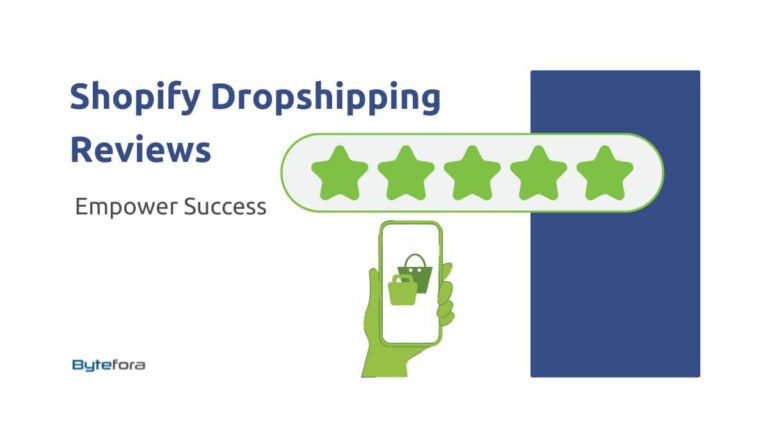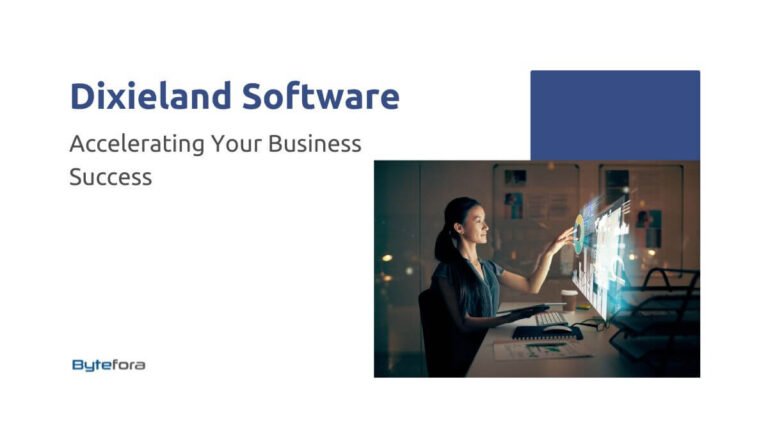
Webinars have become indispensable for businesses and individuals in the ever-evolving digital communication landscape. They are powerful tools for disseminating information, engaging audiences, and fostering meaningful connections. Among the myriad webinar platforms, WebinarJam has become a popular choice. However, as the needs and preferences of users continue to diversify, exploring alternatives to WebinarJam has become a pressing consideration.
Transitioning into exploring alternatives, this article aims to guide you through the vast array of webinar unique requirements. Whether you’re seeking advanced features, a more budget-friendly option, or simply a change in user experience, this comprehensive guide will navigate you through WebinarJam alternatives beyond a single platform’s confines.
Table of Contents
Understanding WebinarJam
WebinarJam is a robust and widely used platform offering many features to facilitate seamless online events. As we delve into the intricacies of WebinarJam, it’s crucial to comprehend its strengths and limitations.
At its core, WebinarJam provides a user-friendly interface that simplifies the process of hosting webinars. With features such as live chat, screen sharing, and attendee interaction tools, it caters to the dynamic nature of virtual events. Its robust analytics tools empower hosts to measure the success of their webinars and refine their strategies for future engagements.
However, like any tool, WebinarJam comes with its considerations. Users have reported occasional technical glitches, and the pricing structure might be perceived as somewhat steep for certain budgets. This comprehensive understanding of WebinarJam sets the stage for our exploration of alternative platforms, where we will evaluate how other options address these nuances and offer a more tailored solution for your webinar hosting needs.
Key Features to Look for in Webinar Platforms
When considering alternatives to WebinarJam, it’s essential to clearly understand the key features contributing to a successful webinar experience. These features serve as benchmarks for evaluating the effectiveness and efficiency of different platforms.
User-Friendly Interface
A well-designed, intuitive interface is paramount for a seamless webinar experience. Look for platforms prioritizing user-friendliness, ensuring hosts and attendees can navigate effortlessly.
Customization Options
The ability to customize webinar settings, branding, and registration pages adds a personalized touch to your events. Seek platforms that offer a high degree of customization to align with your brand identity.
Interactive Tools
Engaging your audience is important for a successful webinar. Look for platforms that provide interactive tools such as polls, Q&A sessions, and live chat, fostering real-time participation and feedback.
Robust Analytics
Comprehensive analytics tools enable hosts to evaluate the success of their webinars. Metrics like attendance rates, engagement levels, and participant demographics empower hosts to refine their strategies for future events.
Reliable Technical Support
Technical issues can arises in the world of webinars. A platform with reliable customer support ensures prompt assistance, minimizing disruptions and enhancing the overall experience for hosts and participants.
As we explore WebinarJam alternatives, the presence and effectiveness of these key features will be integral to our evaluation. Each alternative will be scrutinized based on how well it addresses these critical aspects, providing valuable insights into the user experience and functionality offered by different webinar platforms.
Top Alternatives to WebinarJam
With an understanding of the key features that define a successful webinar platform, let’s explore some top alternatives to WebinarJam. These alternatives cater to diverse needs, providing unique features and functionalities that align better with your webinar hosting objectives.
1. Zoom
Zoom emerge as a compelling choice in the vast landscape of webinar platforms. Renowned for its reliability and scalability, Zoom offers a robust solution for hosting small-scale meetings and large-scale events. With its seamless user experience and intuitive interface, Zoom Webinars empower hosts to engage audiences effectively while providing attendees with a streamlined viewing experience. Pricing plans are structured to cater to diverse budgets, ensuring accessibility without compromising essential features. From interactive polling to breakout rooms for group discussions, Zoom Webinars offer a comprehensive suite of tools to enhance engagement and interaction throughout the webinar experience.
2. GoToWebinar
GoToWebinar stands out as a noteworthy alternative to WebinarJam, offering many features tailored to meet the diverse needs of webinar hosts. With its advanced analytics capabilities, customizable registration pages, and seamless integration options, GoToWebinar provides a comprehensive solution for planning, hosting, and analyzing webinars. Hosts can leverage its user-friendly interface to create engaging webinar experiences that resonate with their target audience. Pricing plans are flexible, allowing businesses of all sizes to access the platform’s extensive feature set without breaking the bank. Whether hosting training sessions, product demonstrations, or marketing webinars, GoToWebinar offers the tools and support to drive success.
3. Demio
Demio emerges as a top contender among WebinarJam alternatives, prioritizing ease of use, sleek design, and automation features. With its intuitive interface and straightforward setup process, Demio streamlines the webinar hosting experience, allowing hosts to focus on delivering valuable content to their audience. The platform’s automation capabilities, including registration reminders and post-webinar follow-ups, help save time and increase efficiency for hosts. Pricing plans are transparent and affordable, making Demio an attractive option for businesses and individuals looking to maximize their ROI. Whether hosting live events, automated webinars, or hybrid experiences, Demio provides the tools and support to drive engagement and achieve webinar success.
4. Livestorm
Livestorm offers a comprehensive webinar hosting solution designed to meet the evolving needs of businesses and organizations. With features such as customizable branding, interactive polls, and integration with popular marketing tools, Livestorm provides a versatile platform for hosting engaging and interactive webinars. The platform’s user-friendly interface makes it easy for hosts to create and manage webinars. At the same time, its robust analytics capabilities enable it to track key metrics and measure the success of its events. Pricing plans are flexible and scalable, allowing users to choose the option that best fits their budget and requirements. Whether hosting internal training sessions, customer onboarding webinars, or virtual events, Livestorm provides the tools and support to drive webinar success.
5. Webex Events
Webex Events by Cisco offers a comprehensive solution for hosting webinars and virtual events. With features such as customizable registration pages, interactive polling, and breakout sessions, Webex Events provides a versatile platform for engaging audiences and facilitating collaboration. The platform’s reliable technical support ensures that hosts can quickly resolve any issues that may arise during their events, minimizing disruptions and enhancing the overall attendee experience. Pricing plans are flexible and transparent, making it easy for businesses of all sizes to access the platform’s advanced features and capabilities. Whether hosting large-scale conferences, training sessions, or product launches, Webex Events provides the tools and support to drive webinar success.
6. StreamYard
StreamYard is a popular choice for hosting live streaming and webinar events, offering a user-friendly interface and robust feature set. With its customizable branding options, multi-streaming capabilities, and audience engagement tools, StreamYard enables hosts to create dynamic and interactive webinar experiences. The platform’s affordability and scalability make it an attractive option for small to medium-sized businesses and individual creators looking to connect with their audience and grow their brand. Whether hosting interviews, panel discussions, or product demonstrations, StreamYard provides the tools and support needed to drive engagement and achieve webinar success.
7. EasyWebinar
EasyWebinar offers a comprehensive solution for hosting webinars and automated webinar funnels. With features such as advanced analytics, customizable registration pages, and integration with email marketing platforms, EasyWebinar provides a versatile platform for creating and managing engaging webinar experiences. The platform’s user-friendly interface and automation capabilities make it easy for hosts to schedule and promote their events. At the same time, its robust analytics tools enable them to track key metrics and measure the success of their campaigns. Pricing plans are flexible and scalable, allowing businesses of all sizes to access the platform’s advanced features and capabilities. Whether hosting live events, automated webinars, or hybrid experiences, EasyWebinar provides the tools and support needed to drive webinar success.
8. ClickMeeting
ClickMeeting offers a comprehensive solution for hosting webinars and online meetings, with features such as customizable layouts, interactive polls, and integration with popular marketing tools. The platform’s user-friendly interface and affordability make it an attractive option for businesses of all sizes looking to connect with their audience and drive engagement. Whether hosting training sessions, product demos, or virtual conferences, ClickMeeting provides the tools and support to create dynamic and engaging webinar experiences. Pricing plans are transparent and scalable, allowing users to choose the option that best fits their budget and requirements.
9. Adobe Connect
Adobe Connect is a comprehensive webinar and virtual meeting platform offering many features and capabilities. With customizable layouts, interactive features, and robust analytics, Adobe Connect provides a versatile solution for hosting engaging and interactive webinars. The platform’s integration with Adobe’s suite of creative tools makes it easy for users to create and deliver compelling content to their audience. Pricing plans are flexible and scalable, allowing businesses of all sizes to access the platform’s advanced features and capabilities. Whether hosting internal training sessions, customer onboarding webinars, or virtual events, Adobe Connect provides the tools and support needed to drive webinar success.
10. BigMarker
BigMarker offers a comprehensive solution for hosting webinars and virtual events, with features such as customizable branding, interactive polls, and integration with popular marketing tools. The platform’s user-friendly interface and scalability make it an attractive option for businesses of all sizes looking to connect with their audience and drive engagement. Whether hosting training sessions, product demos, or conferences, BigMarker provides the tools and support to create dynamic and engaging webinar experiences. Pricing plans are transparent and scalable, allowing users to choose the option that best fits their budget and requirements.
12. Livestream
Livestream offers a comprehensive solution for hosting live streaming and webinar events, with features like HD streaming, audience engagement tools, and analytics. The platform’s user-friendly interface and reliability make it an attractive option for businesses and organizations looking to connect with their audience and drive engagement. Whether hosting virtual events, product launches, or panel discussions, Livestream provides the tools and support to create memorable and impactful webinar experiences. Pricing plans are flexible and scalable, allowing users to choose the option that best fits their budget and requirements.
13. WebinarNinja
WebinarNinja offers a comprehensive solution for hosting webinars, with features such as customizable registration pages, analytics, and automated webinar funnels. The platform’s user-friendly interface and affordability make it an attractive option for businesses and entrepreneurs looking to connect with their audience and drive engagement. Whether hosting live events, automated webinars, or hybrid experiences, WebinarNinja provides the tools and support to create dynamic and engaging webinar experiences. Pricing plans are transparent and scalable, allowing users to choose the option that best fits their budget and requirements.
Tips for Choosing the Right Webinar Platform
Selecting the right webinar platform for online events. As you explore alternatives to WebinarJam, consider the following tips to guide you in choosing a platform that aligns seamlessly with your unique needs and objectives.
Clearly Define Your Requirements
Begin by outlining your specific webinar hosting requirements. Identify your events’ crucial features and functionalities, ensuring a platform that caters to your unique goals.
Evaluate User-Friendliness
Opt for a scaffold with an intuitive and user-friendly interface. This will streamline the hosting process, making it easier for hosts and participants to navigate and engage with the content.
Consider Customization Options
Look for platforms that offer ample customization options. The ability to brand your webinars, customize registration pages, and tailor the overall look and feel contributes to a more personalized and professional event.
Assess Interactive Tools
The success of a webinar often hinges on audience engagement. Choose a platform with interactive tools like live chat, polls, and Q&A sessions to foster real-time participation and feedback.
Prioritize Technical Support:
Technical problems can arise unexpectedly, and having reliable customer support is crucial—support to ensure quick resolution of any challenges during your webinars.
Compatibility with Additional Tools
Consider the platform’s compatibility with other integration capabilities and webinar setups.
Trial Period and Demos
Take benefit of trial periods or demo versions offered by webinar platforms. Hands-on experience allows you to assess the platform’s features and usability, ensuring it meets your expectations before committing.
Pricing Structure and Value
Carefully evaluate the pricing structure of potential platforms. While cost is a factor, the value offered must also be considered. A platform that aligns with your requirements and provides value for money is a sound investment.
Confidently navigate the alternatives, ensuring that the chosen webinar platform meets and exceeds your expectations for hosting successful online events.
Addressing Common Concerns
As you explore alternatives to WebinarJam, addressing common concerns that may arise during the transition is essential. Anticipating and overcoming these challenges will ensure a smoother migration to a new webinar platform.
Transitioning Technical Hurdles
It’s not uncommon to encounter technical challenges when switching webinar platforms. To address this, platforms typically offer robust onboarding processes and resources. Leverage these to familiarize yourself with the new interface and troubleshoot technical issues.
Data Migration and Integration
Moving your existing data, including participant lists and past webinar recordings, to a new platform can be a concern. Prioritize platforms that offer seamless data migration tools and integration options with other software you use to avoid disruptions.
Participant Communication
Informing your audience about the transition is crucial to maintaining engagement. Choose a platform that facilitates easy communication with your participants. Communicate the change, provide relevant instructions, and reassure them about the continued quality of your webinars.
Learning Curve for Hosts
A new platform may have a learning curve for hosts accustomed to WebinarJam. To mitigate this concern, opt for platforms that offer training resources, tutorials, and responsive customer support. Familiarize yourself with the new features to maximize your hosting capabilities.
Ensuring Data Security
Security is a top priority when dealing with online platforms. Choose alternatives prioritizing data security, ensuring that sensitive information shared during your webinars is protected. Review the security measures in place, such as encryption and access controls.
Platform Reliability and Uptime
Concerns about the reliability and uptime of a new platform are valid. Under various circumstances, prioritize platforms with a track record of stability and minimal downtime.
Budgetary Considerations
Budget constraints often influence decisions when exploring alternatives. Choose a platform that aligns with your budgetary requirements while offering the necessary features. Look for transparent pricing structures and consider the long-term value the platform provides.
You can confidently navigate the transition to a new webinar platform by proactively addressing these common concerns. Each concern becomes an opportunity to select the overall webinar hosting experience.
The Future of Webinars: Trends and Innovations
As the landscape of online communication continues to evolve, the future of webinars is marked by exciting trends and innovative advancements. Exploring these trends is crucial for staying ahead in the digital era and selecting webinar platforms that are future-ready and equipped to meet evolving needs.
Hybrid Events and Flexibility
The rise of hybrid events signifies a blend of in-person and virtual experiences. Webinar platforms adapt to this trend by offering features that seamlessly integrate both formats, providing hosts and participants with increased flexibility.
Enhanced Audience Engagement Tools
Future-ready webinar platforms are placing a strong emphasis on enhancing audience engagement. Expect to see innovative tools such as augmented reality (AR), virtual reality (VR), and gamification integrated into webinar experiences, creating more interactive and immersive sessions.
Artificial Intelligence (AI) Integration
AI is making its mark in the webinar landscape, offering personalized experiences and automating various aspects of event management. Look for platforms that leverage AI to analyze participant behavior, suggest content, and streamline administrative tasks.
Improved Analytics and Data Insights
The future of webinars is data-driven, with platforms providing more sophisticated analytics tools. Expect comprehensive insights into participant behavior, preferences, and engagement levels, enabling hosts to refine their strategies and optimize future events.
Integrations with Collaborative Tools
Are becoming integral to webinar setups. Look for webinar platforms that seamlessly integrate with these tools, facilitating smoother collaboration among hosts, presenters, and participants.
Accessibility and Inclusivity Features
The future of webinars prioritizes accessibility and inclusivity. Platforms are incorporating features such as live transcription, multilingual support, and improved accessibility for participants with disabilities, ensuring a more inclusive webinar experience.
Sustainability Initiatives
Sustainable practices are gaining prominence, and future-ready webinar platforms are expected to align with environmental considerations. Look for platforms implementing eco-friendly measures in their operations and events, contributing to a more sustainable digital environment.
By keeping abreast of these trends, you prepare for the future of webinars and ensure that the platform you choose can adapt to these innovations. The evolving landscape allows hosts to create more engaging, inclusive, and environmentally conscious webinar experiences.
Reimagining Webinars for Success
In the pursuit of hosting successful webinars, embracing a mindset of continuous innovation and adaptation is imperative. As we explore alternatives to WebinarJam and consider future trends, reimagining webinars for success involves strategic planning and incorporating cutting-edge practices.
Maximizing Interactive Elements
Elevate the participant experience by incorporating a variety of interactive elements. Utilize live polls, Q&A sessions, and interactive discussions to foster engagement and keep your audience actively involved throughout the webinar.
Harnessing the Power of Multimedia
Beyond traditional presentations, consider integrating multimedia elements to make your webinars more dynamic. Incorporate videos, infographics, and interactive visuals manner.
Seamless Integration of Additional Tools
To enhance the overall functionality of your webinars, seamlessly integrate additional tools such as social media platforms, collaboration tools, and audience response systems. This integration fosters a more comprehensive and streamlined webinar experience.
Personalization for Targeted Impact
Incorporating personalization strategies. Tailor your content, communication, and interactive elements to cater to specific audience segments, creating a more targeted and impactful experience.
Experimenting with Hybrid Formats
Embrace the flexibility of mixed formats that blend in-person and virtual elements. At the same time, participants are provided with options to engage in the manner that suits them best.
Pre- and Post-Webinar Engagement
Extend the lifecycle of your webinars by engaging participants before and after the live event. Utilize pre-webinar communication to build anticipation and post-webinar engagement to continue discussions, share resources, and gather feedback for future improvements.
Emphasis on Accessibility and Inclusivity
Ensure that your webinars are accessible to a diverse audience. Implement features like live transcription, closed captions, and language options to make your content inclusive and cater to participants with varying needs.
Strategic Promotion and Marketing
Increase the reach and impact of your webinars through strategic promotion and marketing efforts. Generate interest and drive registrations, ensuring a robust turnout for your events.
By reimagining webinars with these strategic considerations, you elevate the quality of your online events and position yourself to adapt to the evolving landscape. Success in webinars is not just about the platform; it’s about creativity, engagement, and a commitment to delivering value to your audience.
A New Chapter: Making the Switch
Embarking on travel to explore alternatives to WebinarJam signifies a pivotal moment—a decision to evolve and optimize your webinar hosting experience. Switching to a new platform involves careful planning, seamless execution, and a commitment to a new chapter in your online events.
Evaluate Your Reasons for Switching
Before making any decisions, clearly articulate why you choose to switch webinar platforms. Whether it’s for enhanced features, cost considerations, or a shift in your webinar strategy, a thorough understanding of your motivations is essential.
Choose the Right Alternative
Having explored various alternatives, select the platform that aligns most closely with your unique requirements. Consider features, pricing, user-friendliness, and the overall value the platform brings to your webinar hosting endeavors.
Develop a Transition Plan
A smooth transition requires a well-thought-out plan. Develop a timeline for the switch, outlining key milestones, such as data migration, participant communication, and host training sessions. A phased approach ensures a gradual and manageable transition.
Communicate Transparently with Participants
Transparency is key when informing your audience about the switch. Communicate the reasons for the change, highlight the benefits they can expect, and provide step-by-step instructions on accessing and engaging with your webinars on the new platform.
Train Hosts and Stakeholders
Hosts and stakeholders in webinar management should be well-versed with the new platform. Conduct training sessions to familiarize them with features, tools, and best practices. This ensures a confident and competent team during the transition.
Test and Troubleshoot
Before any live events, conduct thorough testing of the new platform. Identify and address potential issues to guarantee a seamless experience for hosts and participants. A successful testing phase minimizes the risk of disruptions during actual webinars.
Gather Participant Feedback
Encourage participant feedback during and after the initial webinars on the new platform. This input is invaluable for identifying areas of improvement, addressing concerns, and fine-tuning your approach to meet participant expectations.
Monitor and Iterate
Post-switch, closely monitor the performance of your webinars on the new platform. Track key metrics, gather insights, and be open to iteration. Continuous improvement ensures your webinar strategy remains dynamic and aligned with your evolving goals.
Engagement and success. By approaching the transition strategically and embracing the possibilities, you set the stage for a reinvigorated and optimized webinar hosting experience.
Redefining Success Metrics
As you transition to a new webinar platform, it’s crucial to redefine the metrics that gauge the success of your online events. Shifting your focus to fresh and relevant success indicators ensures that your efforts align with the capabilities and goals of the chosen alternative. Let’s explore how you can redefine success metrics for a more comprehensive evaluation.
Establish New Benchmarks
Begin by establishing new benchmarks based on the features and capabilities of the alternative platform. Identify key performance indicators (KPIs) that align with your webinar goals, considering audience engagement, conversion rates, and attendee satisfaction.
Track Audience Interaction
With interactive tools being a focal point of many webinar platforms, track audience interaction metrics. Monitor the frequency of participant engagement through features like live chat, polls, and Q&A sessions. Higher interaction levels often correlate with a more engaging and impactful webinar.
Measure Accessibility and Inclusivity
Success in the redefined landscape should encompass accessibility and inclusivity. Measure the inclusivity of your webinars by evaluating features such as closed captions, live transcription, and language options. Ensure that your content is accessible to a diverse and global audience.
Assess Data and Analytics
Leverage the advanced analytics tools the new platform provides to assess data comprehensively. Beyond attendance rates, detailed analytics provide insights into participant demographics, content engagement, and behavior. This data-driven approach guides strategic decision-making for future events.
Evaluate Integration Efficiencies
Evaluating the efficiencies gained if you’ve integrated additional tools with the new webinar platform. Assess how well the platform collaborates with other tools, streamlining processes and enhancing overall functionality. A seamless integration contributes to a more cohesive and efficient workflow.
Measure Post-Webinar Engagement
Extend your success metrics to include post-webinar engagement. Measure the effectiveness of post-event communication, resource sharing, and participant feedback. A robust post-webinar strategy contributes to the ongoing success of your webinars beyond the live event.
Celebrate Milestones and Achievements
Recognize and celebrate milestones and achievements reached with the new platform. Whether it’s increased attendance, higher engagement rates, or positive participant feedback, acknowledging these successes motivates your team and reinforces the value of the switch.
Iterate Based on Feedback
Success metrics should be dynamic and responsive to participant feedback. Use the insights gathered from participant responses to iterate and refine your webinar strategy. Continuous improvement ensures your webinars remain relevant, engaging, and aligned with audience expectations.
By redefining success metrics, you ensure that your evaluation criteria align with the capabilities and goals of the alternative webinar platform. This strategic approach enhances your understanding of webinar success and allows you to optimize your online events continually.
Conclusion: Navigating the Webinar Landscape – Finding Your Perfect Platform
Exploring alternatives to WebinarJam is a strategic step toward embracing the future of webinars. As we conclude this comprehensive guide, it’s evident that the webinar landscape is rich with options, each offering unique features and opportunities for success.
Reflecting on the Journey
We’ve navigated through the strengths and considerations of WebinarJam, examined key features crucial for successful webinars, explored top alternatives, and delved into real-world case studies. The goal was not just to find an alternative but to empower you to make an informed choice that aligns with your needs.
Embracing Innovation and Trends
The future of webinars is marked by innovation and trends that enhance audience engagement, provide robust analytics, and prioritize accessibility. By reimagining webinars for success, integrating cutting-edge practices, and staying abreast of industry trends, you position yourself to lead in the ever-evolving digital landscape.
A New Chapter Awaits
Switching to a new webinar platform for growth, interaction, and success. By carefully redefining success metrics, adapting to emerging trends, and iterating based on participant feedback, you set the stage for a future-ready webinar strategy.
Continual Optimization and Learning
Success in webinars is a continual journey of optimization and learning. Celebrate achievements, learn from setbacks, and remain open to the evolving needs of your audience. The webinar landscape offers a canvas for creativity, engagement, and impactful communication.
Finding Your Perfect Platform
As you navigate this journey, the key is to find the perfect platform that resonates with your goals, aligns with your audience, and empowers you to host successful webinars. Whether it’s a feature-rich alternative, a focus on accessibility, or seamless integration with collaborative tools, the perfect platform awaits your discovery.
In the ever-evolving world of webinars, embracing change and innovation ensures that your online events remain relevant and transformative. The future of webinars is dynamic, and by navigating this landscape with insight and intention, you’re well-equipped to lead the way into a new era of digital communication.
FAQ Section
Why should I consider alternatives to WebinarJam?
Exploring alternatives to WebinarJam allows you to assess other webinar platforms that suit your unique needs. Whether you seek advanced features, cost-effectiveness, or a change in user experience, considering alternatives ensures you make an informed choice.
How do I know which alternative best fits me?
To find the best fit among alternatives, consider your requirements and evaluate features, pricing, and user-friendliness. Conducting trials, exploring user reviews, and understanding how each platform aligns with your goals will guide you in making an informed decision.
What features should I prioritize in a webinar platform?
Prioritize features based on your webinar goals. A user-friendly interface, customization options, interactive tools, robust analytics, and reliable technical support are essential. Consider additional features such as AI integration, compatibility with collaborative tools, and sustainability initiatives based on your specific needs.
How do I communicate the switch to participants?
Communication is key. Communicate the reasons for the switch, highlight the benefits, and provide step-by-step instructions for participants. Utilize emails, social media, and your existing webinar platform to ensure all participants know about the change.
What steps should I take to transition to a new platform?
Develop a transition plan that includes data migration, participant communication, and host training. Test the new platform thoroughly, gather participant feedback, and address any issues promptly. A phased approach ensures a smooth and manageable transition.
How can I redefine success metrics for my webinars?
Redefine success metrics by establishing new benchmarks aligned with the features and goals of the new platform. Track audience interaction, measure accessibility and inclusivity, assess data and analytics comprehensively, and iterate based on participant feedback. Celebrate milestones and achievements to motivate your team.
What should I consider in the future of webinars?
Stay ahead by embracing trends such as hybrid events, enhanced audience engagement tools, AI integration, improved analytics, collaborative tool compatibility, accessibility features, and sustainability initiatives. Continually reevaluate your webinar strategy to align with emerging trends and innovations.






